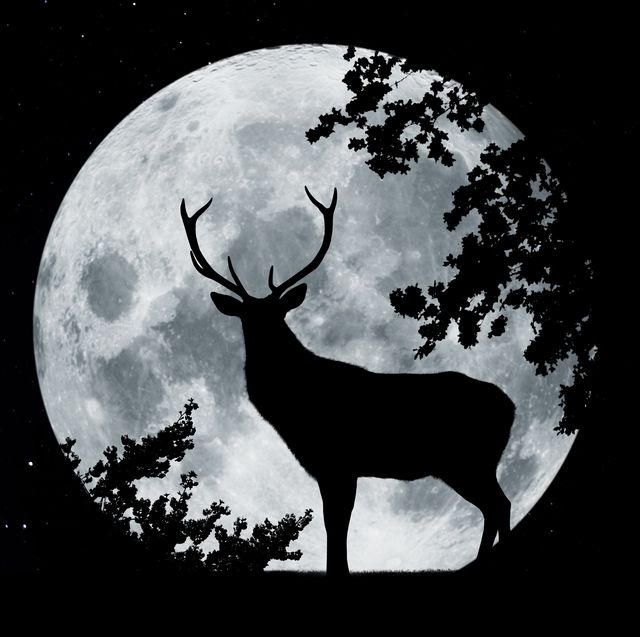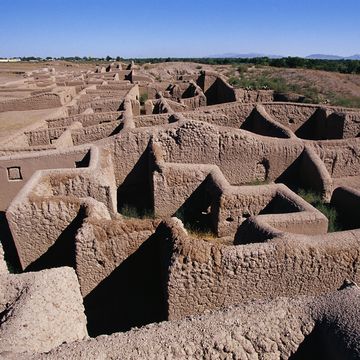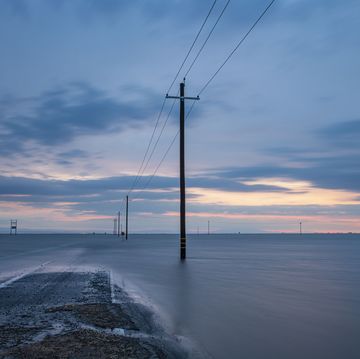- July’s full “Buck Moon” is expected to rise on Sunday, July 5.
- The moon will begin to rise after sunset on the evening of July 4, and reach maximum opacity and brightness at 12:44 a.m. EDT on July 5.
- The term “Buck Moon” refers to the male deer, whose antlers finish growing and hardening in the summer.
Although May brought 2020’s final supermoon, the year still promises monthly full moons for your marvel. According to Farmers’ Almanac, the next one is July’s full “Buck Moon,” and it’s expected to rise on Sunday, July 5—a perfect way to end a weekend of Independence Day celebrations.
What does the name Buck Moon mean?
The term “Buck Moon,” per the almanac, refers to the male deer, whose antlers finish growing and hardening in the summer after sprouting velvety nubs in early spring. Ultimately, the antlers’ grand silhouette against the summer sky gave the moon its name. You might also hear it called the “Thunder Moon” because thunderstorms are so prominent in July, or even the “Hay Moon,” as it marks the time for farmers to cut and cure hay to store for winter feed.
When is the best time to see the full Buck Moon this year?
The moon will begin to rise after sunset on the evening of July 4, and reach maximum opacity and brightness at 12:44 a.m. EDT on July 5 (also confirmed by NASA). That means once you’ve finished viewing holiday fireworks, you can watch it take position in real time. And although the moon technically remains at full illumination only for a few seconds, per Farmers’ Almanac, its fall is so slow that it appears full for three days. So there’s really no reason to miss it!
This particular full moon will also bring a penumbral eclipse, according to The Old Farmer’s Almanac, which you’ll have to pay very close attention to see. This type of lunar eclipse occurs when “the moon crosses through the faint outer edge of Earth’s shadow,” which is called the penumbra, “making part of the Moon appear ever-so-slightly darker than usual.”
Visually, its occurrence will be far more understated than a full lunar or solar eclipse, and you may not be able to see it at all. However, if you want to try, The Old Farmer’s Almanac reports that it will be visible from most of North America (excluding northernmost Canada and Alaska) from 11:04 p.m. EDT on July 4 to 1:56 a.m. EDT on July 5.
What’s the next full moon and when can I see it?
Farmers’ Almanac reports that August’s full moon, the “Sturgeon Moon,” will reach full opacity on August 3 at 11:59 a.m. EDT. A sturgeon is a huge prehistoric fish (like, up to 12 feet long huge) that Algonquin fishing tribes would hunt during summer’s end as temperatures began to give way to autumnal coolness. August’s full moon is also known as the “Red Moon,” the “Green Corn Moon,” or the “Grain Moon.”
Support from readers like you helps us do our best work. Go here to subscribe to Prevention and get 12 FREE gifts. And sign up for our FREE newsletter here for daily health, nutrition, and fitness advice.

Kayla Blanton is a freelance writer-editor who covers health, nutrition, and lifestyle topics for various publications including Prevention, Everyday Health, SELF, People, and more. She’s always open to conversations about fueling up with flavorful dishes, busting beauty standards, and finding new, gentle ways to care for our bodies. She earned a bachelor’s degree in journalism from Ohio University with specializations in women, gender, and sexuality studies and public health, and is a born-and-raised midwesterner living in Cincinnati, Ohio with her husband and two spoiled kitties.












